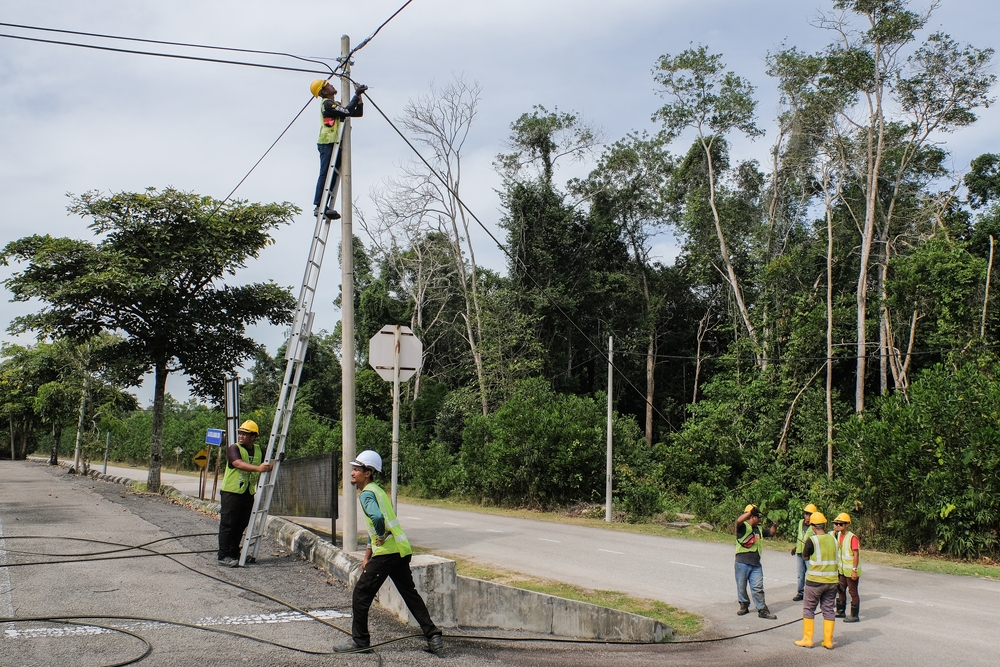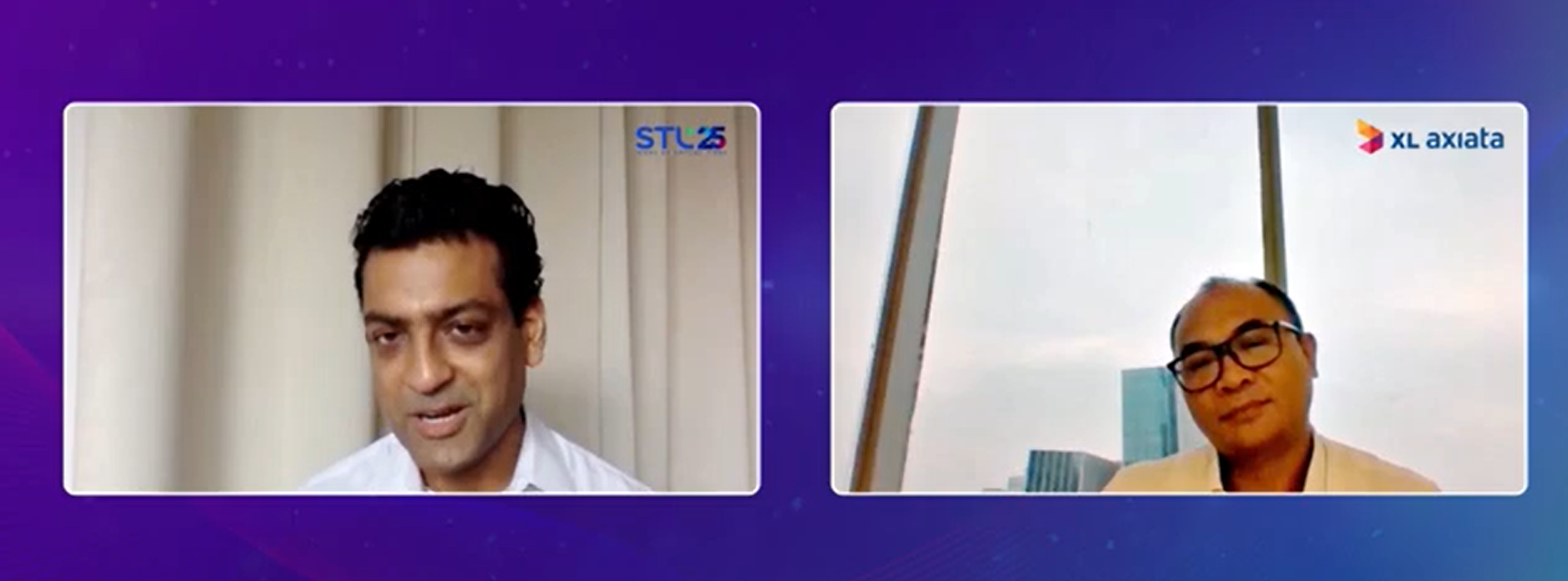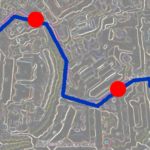We discuss the following topics in this blog:
- Adapting to your customer requirements post-pandemic.
- Fiberization in the long term.
In addition to these topics, we shall also be answering the following FAQs:
- What is WiFi?
- What is an Optical Fibre Cable?

This year has been one of considerable of people with the Coronavirus outbreak which is created all kinds of effects in the world, including a strain in the telecom networks. We are just curious to understand what the impact has been on XL? How you are adapting to your customer requirements that have changed in this time?
Okay, yes, this pandemic is basically giving us really headache in the beginning and in this crisis , I also feel that a lot of things that we have been doing proper is being challenged by the situation.
Are we doing the plan good enough? Are we implementing good enough?
Because in for the last five or seven years, when we start to modernize our operation at the time with tried to set up what we call crisis management to time. Time flies and we actually never know when is going to happen. That we actually need Crisis management ya so this year is being a real a drill is not a fight, the disease, a real drill that when we built the crisis management in, we did not show that we did, we needed or we don’t need it because it looks like it’s we offer reacting or we prepare. But this year we felt a crisis management is really, really needed and really very important to guide not only the business but also because it is impacting the employees, the family.

And so when we have to spend time, our management split the decision normal BIU work and crisis and the crisis management in day to day work. So basically we tried to cope with all the days that happening suddenly change now every talking about the network at the beginning of work from home,study from home we can see the traffic is suddenly Increasing a lot. Normally it’s 1% daily now is like 2 to 3% daily.
How do we cope with that?
At the same time, we also feel that the capacity that we provide suddenly is not enough because normally we just plan for the central business district. Now, suddenly all the traffic move to the residential area were wherein fiber not enough. All the fiber and LTE, high capacity, latest RRU, latest equipment have been deployed in the central business district. We connect all the offices all the building with fiber network and then put the site. It is covering houses a second priority the last year but they’re making it even harder because suddenly all moved to residents.

But good thing is we start doing Hyperscale Fiberization for the last two or three years. It’s a very long journey, a very hard journey because upgrading a radio is easy. Upgrading transport is mid to long-term journey. But good thing is, we already start doing there is not only talking about backbone inter-city inter data in the data centre but also going directly to this idea at the same time is also very fortunate to ask. For the last two years we also based our XL FTTh which are becoming a star now Yah, because their penetration rate is keep increasing and revenue, of course. But we still have a very small scale. But growing is very promising. So this one of the strategy from XL axiata actually paid well.

But in terms of mobile business, I can say that we are really, really focusing on how to subdue pass the better we know we understand that government is really, really emphasizing every time that education is online. Education is something that cannot be neglected and need to be a priority from the government and also from all of us from the operator.
We have a social responsibility for it. So to balance this out is really tough is really challenging. But at the same time, we cannot go to the office. We cannot meet, its harder to coordinate the challenges not only serving our customer, but also how to consolidate our resources at the same time, we also need to take care of your family. So you know that that’s something that is never been happened before. But good things from Axiata I can say that as management we adopting very fast.
We even can speed up in some places because now the demand is high. But of course, fiber is now still challenging because you are a fiber company. That’s why I say that fiber is first priority. Even if we do not expanding our idea fiber still need to be there. Because next year, when we have more capacity, we have maybe more spectrum. Definitely, we cannot afford just use the microwave. So fiber is one priority that we still need to go even though we shift our priority to residential that also main that fiber to the residential area is very important. That’s what we keep doing now. That’s what we try to rebase our plan to put transport first and then we expand regulator. So that’s what I can say again.
Watch The Complete Discussion
FAQs
What is WiFi?
Put simply, WiFi is a technology that uses radio waves to create a wireless network through which devices like mobile phones, computers, printers, etc., connect to the internet. A wireless router is needed to establish a WiFi hotspot that people in its vicinity may use to access internet services. You’re sure to have encountered such a WiFi hotspot in houses, offices, restaurants, etc.
To get a little more technical, WiFi works by enabling a Wireless Local Area Network or WLAN that allows devices connected to it to exchange signals with the internet via a router. The frequencies of these signals are either 2.4 GHz or 5 GHz bandwidths. These frequencies are much higher than those transmitted to or by radios, mobile phones, and televisions since WiFi signals need to carry significantly higher amounts of data. The networking standards are variants of 802.11, of which there are several (802.11a, 802.11b, 801.11g, etc.).
What is an Optical Fibre Cable?
An optical fibre cable is a cable type that has a few to hundreds of optical fibres bundled together within a protective plastic coating. They help carry digital data in the form of light pulses across large distances at faster speeds. For this, they need to be installed or deployed either underground or aerially. Fiber Deployment with standalone fibres cannot be buried or hanged so fibres are bunched together as cables for the transmission of data. This is done to protect the fibre from stress, moisture, temperature changes and other externalities.
There are three main components of a optical fibre cable, core (It carries the light and is made of pure silicon dioxide (SiO2) with dopants such as germania, phosphorous pentoxide, or alumina to raise the refractive index; Typical glass cores range from as small as 3.7um up to 200um), Cladding (Cladding surrounds the core and has a lower refractive index than the core, it is also made from the same material as the core; 1% refractive index difference is maintained between the core and cladding; Two commonly used diameters are 125µm and 140µm) and Coating (Protective layer that absorbs shocks, physical damage and moisture; The outside diameter of the coating is typically either 250µm or 500µm; Commonly used material for coatings are acrylate,Silicone, carbon, and polyimide).
An optical fibre cable is made up of the following components: Optical fibres – ranging from one to many. Buffer tubes (with different settings), for protection and cushioning of the fibre. Water protection in the tubes – wet or dry. A central strength member (CSM) is the backbone of all cables. Armoured tapes for stranding to bunch the buffer tubes and strength members together. Sheathing or final covering to provide further protection.
The five main reasons that make this technology innovation disruptive are fast communication speed, infinite bandwidth & capacity, low interference, high tensile strength and secure communication. The major usescases of optical fibre cables include intenet connectivity, computer networking, surgery & dentistry, automotive industry, telephony, lighting & decorations, mechanical inspections, cable television, military applications and space.













